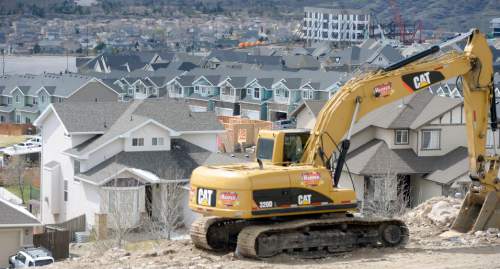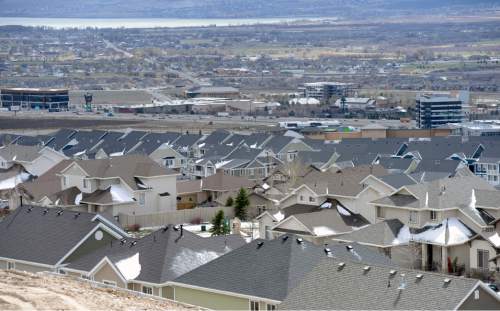This is an archived article that was published on sltrib.com in 2016, and information in the article may be outdated. It is provided only for personal research purposes and may not be reprinted.
A lack of available home-ready land and higher labor costs are squeezing affordability in housing markets along the Wasatch Front and Back, a new study finds.
Demand for new homes is strong and construction is picking up with warming weather, according to the report by Metrostudy, but developed sites for single-family houses, town homes and condominiums remain in relatively short supply.
"Inventory is really tight," said Eric Allen, Metrostudy's director for the Utah-Idaho region. "The cost of developing lots and land is increasing, and that's slowing the process."
This latest study offers more evidence of how rising prices and shrinking supplies are affecting Wasatch Front real estate. Recent first-quarter figures from the Salt Lake Board of Realtors revealed similar trends.
Developers brought 8,128 new lots to market in the past 12 months across the seven-county area centered on Salt Lake City, nearly 9 percent fewer than the previous year, Metrostudy reported. Nearly 60 percent of those lots have already been used.
That trend combined with an ongoing labor shortage in construction trades and a slightly heavier-than-usual winter season to further constrain home supplies.
In a lot-by-lot survey of area subdivisions, Metrostudy analysts counted 2,245 new home starts for the first quarter of 2016, nearly 22 percent more than were being built in the same three months of last year. The Metrostudy numbers, released Monday, cover Salt Lake, Utah, Davis, Weber, Tooele, Summit and Wasatch counties.
New home closings across the region also grew sharply year over year — up 29 percent from the same period in 2015 — but numbers indicate cost rises in land development and labor are limiting supplies and pushing up prices.
The study says new starts of homes priced above $300,000 rose 32 percent for the quarter, while starts on homes priced below $300,000 grew by 13 percent.
Starts in those lower price ranges were mostly for attached housing such as duplexes, town homes and condos.
As of March's close, the seven-county region had a total inventory of 5,693 new homes, representing a 7.7-month supply, compared with an 8-month supply that time last year, Metrostudy said.
The region's median price for a new stand-alone, single-family home is now at $344,200, 4 percent higher than in 2015. The median price for an attached housing unit is slightly lower than it was last year, at $220,600, the study found.
Despite the upward price pressure, Allen predicts that the strength of Utah's economy and stellar job growth "will minimize the effect of these challenges."
Tony Semerad





